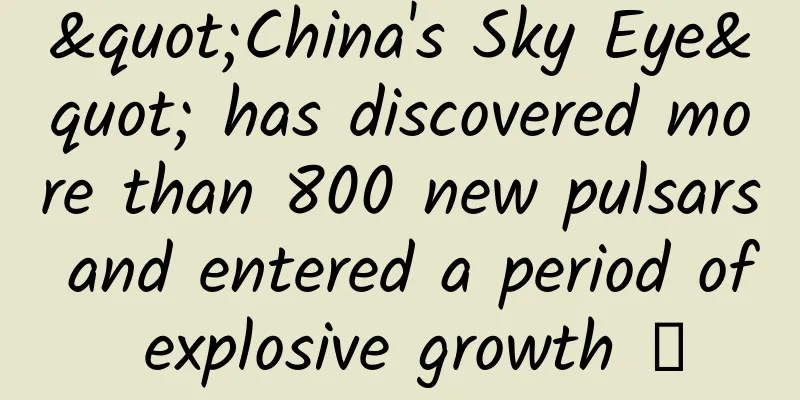Beyond 9,000 meters! Entering the deep earth! Why can "Deep Earth No. 1" break the record?

|
Shaya County in Aksu Prefecture, Xinjiang, is located in the Tarim Basin and on the outer edge of the Taklimakan Desert, the world's second largest mobile desert. As part of the Kingdom of Qiuci on the ancient Silk Road, it was once glittering with the splendid ancient Western Region culture. Populus euphratica nature reserve in Shaya County, Aksu Prefecture, Xinjiang (Image source: Wikipedia) Recently, good news came from the Shunbei Oil and Gas Field Base of the "Deep Earth Project" established by Sinopec Group: the "Deep Earth No. 1" Yuejin 3-3XC well set two records: First: The well was drilled to a depth of 9,432 meters, setting a new record for the deepest well on land in Asia; The second item: By extending horizontally 3,400 meters below the ground, it set a new record for horizontal displacement in ultra-deep drilling. Image source: Xinhua News Agency Behind the two record-breaking achievements lies my country's series of hard-core technologies for "deep earth exploration." 1. Oil and gas reservoirs are deep underground The development of strategic high technologies in the fields of deep sea, deep earth, deep space, and deep blue is part of China's major scientific and technological innovation plan. An important positive response to the "deep earth exploration" (i.e. deep earth) strategy is the exploration of deep oil and gas resources . Some people ask: Why do we have to go "deep" when exploring for oil and gas resources? This is related to the current trend of "oil and gas reserves are getting deeper and deeper". According to statistics since 2016, the oil equivalent of oil and gas resources in my country's deep and ultra-deep layers exceeds 67 billion tons, accounting for more than one-third of my country's total oil and gas resources. (Oil equivalent is a conversion index for calculating various energy quantities based on the calorific value of standard oil. The calorific value of 1 kg of oil equivalent is calculated as 42.62 MJ) In this way, wouldn't the shortage of oil and gas resources be greatly alleviated? It is not so easy to obtain these oil and gas resources from deep and ultra-deep layers. Illustration of the oil and gas formation process (Photo source: Tuchong Creative) The classification of deep and ultra-deep formations has different standards in the world and in my country. From the perspective of my country's oil and gas exploration practice, the National Mineral Reserves Committee made the following definition in 2005: Deep layer: buried 3500 to 4500 meters Ultra-deep layer: below 4500 meters After more than ten years of oil and gas exploration practice and experience summary, Chinese scholars combined the differences in temperature fields between the eastern and western regions of my country to define the deep and ultra-deep layers in the eastern and western regions respectively: Deep layer in the eastern region: 3500 to 4500 meters deep Ultra-deep layer in the eastern region: below 4,500 meters Deep layer in western region: 4500 to 6000 meters deep Ultra-deep layer in the western region: below 6000 meters 2. Although the depth can be measured, oil and gas are hard to come by At the "Shendi No. 1" Shunbei Oil and Gas Field Base, the average depth of oil and gas burial has exceeded 8,000 meters, which is a typical "ultra-deep" oil and gas field. The completed drilling depth of the "Shendi No. 1" Yuejin 3-3XC well is more than 9,000 meters. Its drilling project first faces the common problems faced by ultra-deep and ultra-deep drilling: The strata are very old and have undergone a long period of evolution. The strata structure is extremely complex and is mostly in a high temperature and high pressure environment. The deep fluids are rich in acidic gases, such as hydrogen sulfide and carbon dioxide. In addition, the "Shendi No. 1" Yuejin 3-3XC well has a "distinct personality", so it also encountered some "personality" problems: The well is located outside the ecological red line of the Tarim River Upper Reaches Wetland Nature Reserve in Shaya County, Xinjiang. However, the oil and gas to be extracted are not there, but in an ultra-deep stratum buried more than 7,200 meters deep in the protected area about 3,400 meters away. Sinopec's "Shendi No. 1" Yuejin 3-3XC well photographed by a drone (Photo source: Xinhua News Agency) Therefore, it has a "horizontal displacement" of several kilometers underground . During the drilling process of such a large displacement well, due to the influence of gravity, cuttings are easily accumulated in the well sections with larger well inclination or horizontal sections, thus forming a cuttings bed. If it is allowed to continue to accumulate, it will bring great obstacles to the drilling project . 3. Overcoming challenges and achieving breakthroughs Overcoming Challenge 1: Intelligent Big Data vs. Complex Geological Environment Faced with complex and harsh geological conditions in ultra-deep layers, technicians set up a system for real-time risk warning for the "Shendi No. 1" Yuejin 3-3XC well, making full use of big data, remote technical support and other means to protect the project. In recent years, in the development of oil and gas engineering technology, the application of intelligent drilling big data technology is unstoppable. Intelligent big data seamlessly penetrates the entire drilling process. For example: The downhole measurement system detects downhole tools in real time and "submits" the detection data to the analysis system in real time to analyze the data in order to design the best plan for the next stage; The measurement while drilling system can "collect" the geological parameters involved in the target stratum, and then "feed back" accurate geological information in a timely manner after data analysis. In August this year, workers were operating the ultra-deep well automated drilling rig independently developed by my country to perform drilling operations at the Yuejin 3-3XC oil and gas well (Photo source: Xinhua News Agency) In the eyes of oil and gas engineers, this is a significant technological change - there is no need to rely solely on experience to drill, the era of scientific drilling has arrived. Specifically for the "Shendi No. 1" Yuejin 3-3XC well, an extremely precise downhole measurement and control system has been set up. Signals from more than 7,000 meters below can be delivered to the ground instantly. This is like "adding the finishing touch to a drill" - giving the drill bit eyes and adjusting the "stroke" in real time according to the specific situation, allowing the horizontal well to achieve short-distance freedom and short-cycle freedom. Problem 2: Ultra-deep and large displacement technology versus "ultra-deep" + "large displacement" There are different definitions of extended reach wells. One of them comes from the British BP Company and the American ARCO Company: a directional well or horizontal well with a horizontal displacement (HD) of more than 3,000 meters can be identified as an extended reach well (ERW). Schematic diagram of horizontal displacement of drilling (Source: Wikipedia) The "Deep Earth No. 1" Yuejin 3-3XC well has a horizontal displacement of 3,400 meters, and oil and gas are being extracted in a stratum far deeper than 6,000 meters, so "ultra-deep + large displacement" has become a thorny problem . To solve this problem, technicians used ultra-deep large displacement technology , first going straight down and then extending horizontally, and generously extended more than 3,000 meters horizontally under the stratum to obtain oil and gas resources. 4. Breaking records outside and extracting oil and gas inside Breaking the record is certainly worth celebrating, but what is even more gratifying is that the "Shendi No. 1" Yuejin 3-3XC well has actually obtained a high-yield oil and gas flow. According to statistics, 200 tons of crude oil and 50,000 cubic meters of natural gas can be obtained per day. In addition, two ultra-deep extended-reach wells have been deployed, which, in conjunction with the Yuejin 3-3XC well, can produce a cumulative crude oil output of 58,000 tons, and the newly added recoverable reserves are more than 300,000 tons. Staff are showing the crude oil produced on site (Photo source: Xinhua News Agency) The drilling project of the "Shendi No. 1" Yuejin 3-3XC well has proved that my country has ranked among the world's top countries in deep earth technology and deep oil and gas resource exploration projects, which has laid a solid technical and engineering foundation for ensuring my country's energy security. References: [1] Yang Fei, Zhou Jing. Research on the development of intelligent drilling big data technology[J]. Petrochemical Technology, 2017, 24(09): [2] Feng Fei. Research on the progress of horizontal well drilling technology[J]. Western Mining Engineering, 2023, 35(07): [3] He Dengfa, Jia Chengzao, Zhao Wenzhi, et al. Research progress and key issues of ultra-deep oil and gas exploration in China[J]. Petroleum Exploration and Development, 2003. [4] Guan Xiaodong, Guo Lei. New progress and prospects in the study of deep and ultra-deep oil and gas accumulation[J]. Petroleum Experimental Geology, 2023, 45(02): [5] Miao Xiang, Qin Tianbao, Shi Lei, et al. Analysis of factors affecting cuttings migration in extended reach wells[J]. China Petroleum and Chemical Standards and Quality, 2021, 41(18): [6] Zhang Kang, Lu Xin, Zhang Jiali, et al. Discussion on the technical standard system of ultra-deep drilling and completion[J]. Petroleum Industry Technical Supervision, 2023, 39(10): Author: Zhai Guoqing, member of the China Science Writers Association Reviewer: Zhu Chuanqing, Professor of the School of Earth Sciences, China University of Petroleum (Beijing) Produced by: Science Popularization China Produced by: China Science and Technology Press Co., Ltd., China Science and Technology Publishing House (Beijing) Digital Media Co., Ltd. |
<<: Cai Lun might not have thought that the papermaking technique he improved would turn green!
>>: The colonoscopy results were normal, so how come he suddenly got colon cancer?
Recommend
"Life-extending magic weapon" may also be a "weapon of harm"? These 9 types of people should drink less coffee!
For modern people, coffee has gradually become a ...
1,300 years from now, Legos might still be popping up on this beach…
For beachcombers , Cornwall, in the southwest cor...
How to make a complete and efficient event planning plan? (one)
This article first talks about how to plan a comp...
Practical sharing: about the logic of writing strategies and plans
Today I would like to share with you the writing ...
10 steps to planning an event, and 5 key points to focus on
To plan a high-quality event, operators need to h...
Honor Play Tablet 2 is a great tool for watching TV series without lags. It redefines the all-round entertainment tablet
There is no doubt that increasingly powerful smar...
How to play with Tik Tok’s recommendation rules?
How to create a hit on Douyin? What are the six m...
GITC——Annual gathering of China's Internet technology elites
[[120838]] GITC 2014 Global Internet Technology C...
Sugar-free cola has sweet taste but no "soul"? This food expert found the scientific basis
When you are feeling down, will a cup of cola or ...
Is it appropriate to eat wild vegetables in spring? Don’t pick wild vegetables on the roadside
With the arrival of spring, all things in nature,...
Cutting out carbs? Eating salad? Avoid these 10 pitfalls when losing weight after the Chinese New Year!
Dumplings, glutinous rice balls, sweet and sour p...
The complete guide to RxSwift that all the masters are reading
RxSwift is a project I have been following on Git...
Ramen’s Marketing Strategy
Whether it is an old brand that has quickly becom...
8 words, a simple and rough analysis of the problem that all information flow advertising optimizers have been confused about
Recently, I have received 20 to 30 private messag...
Is it feasible to lose 30 pounds in a month? No matter how urgent your mood is, it is not advisable to lose weight quickly!
gossip Follow the online method of losing 30 poun...









